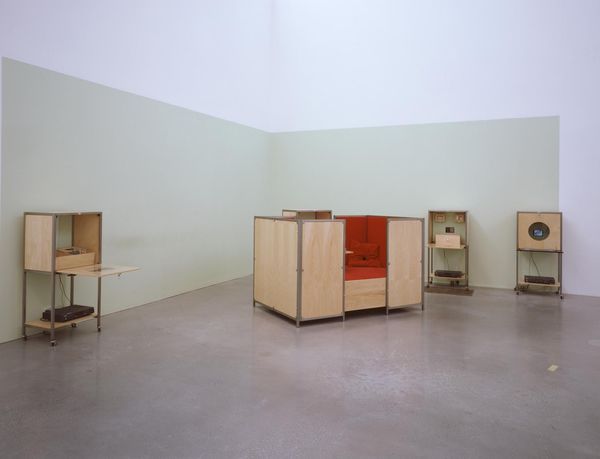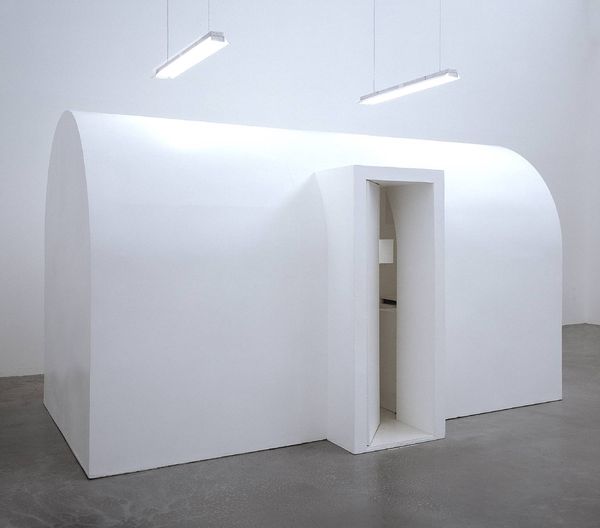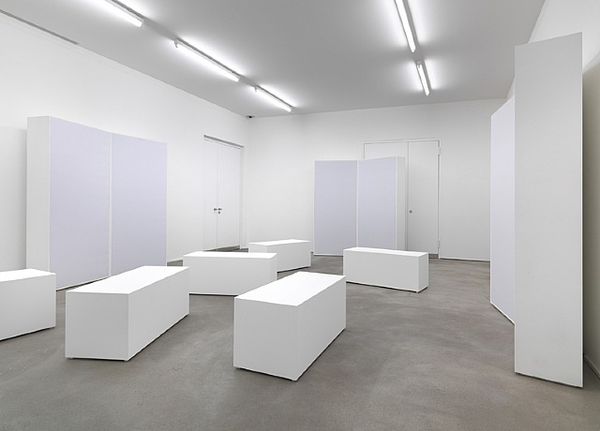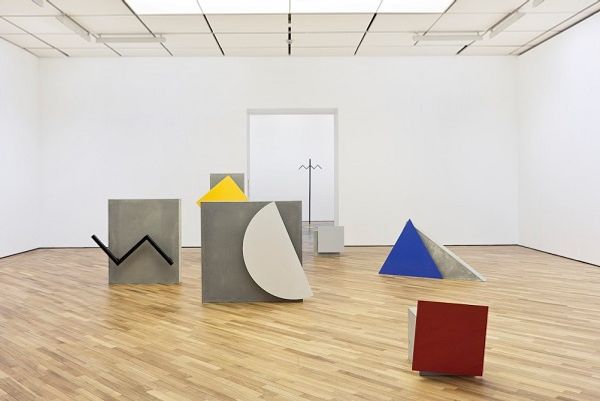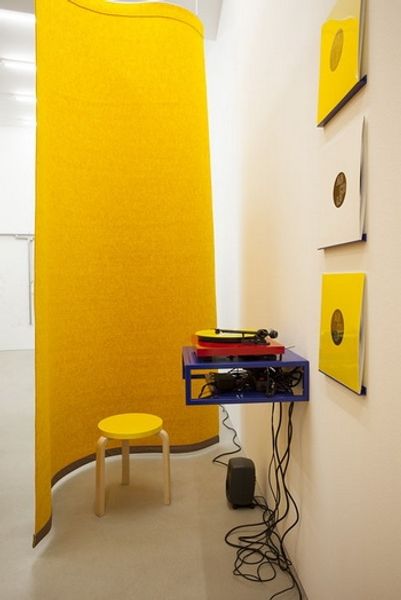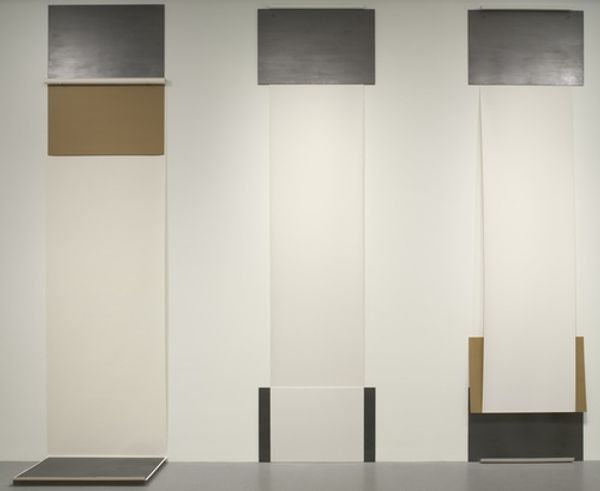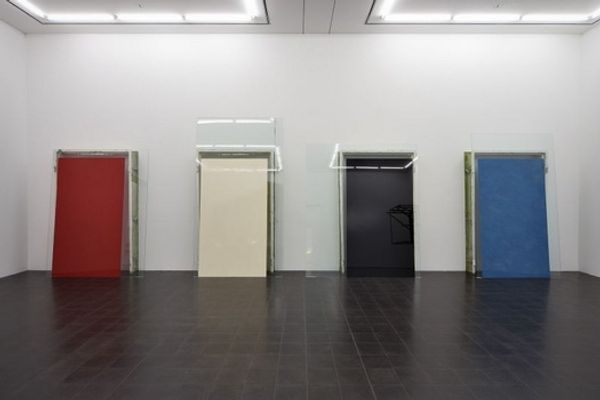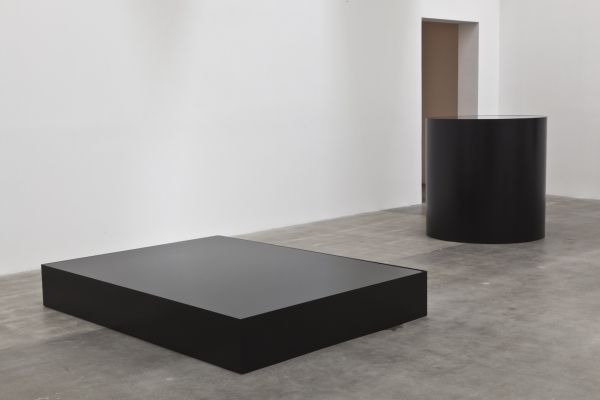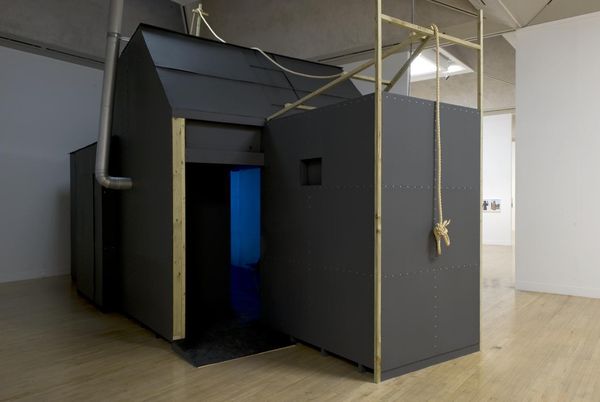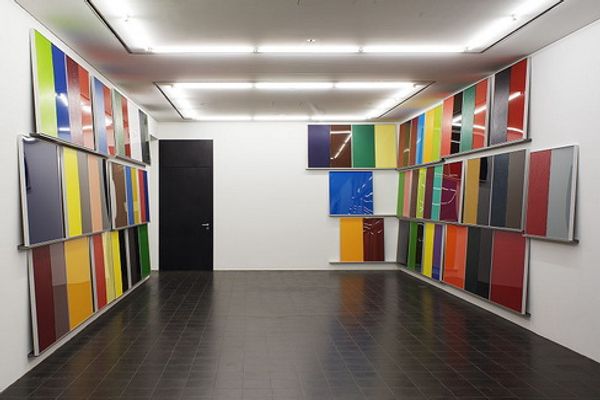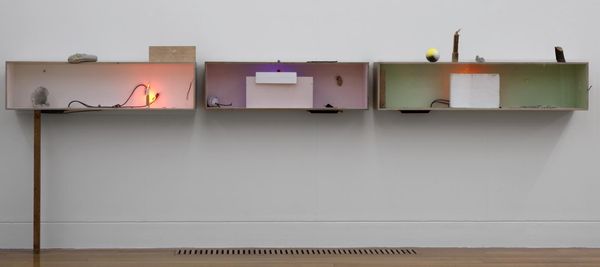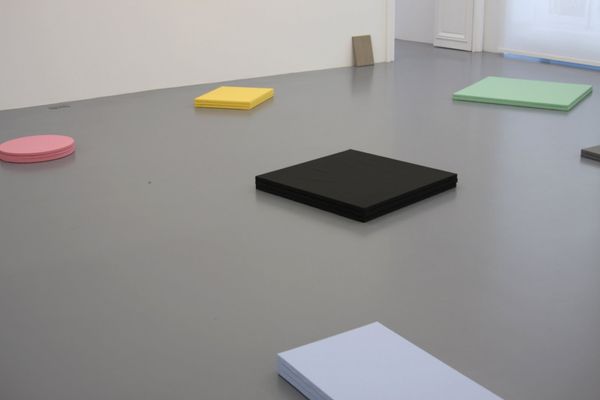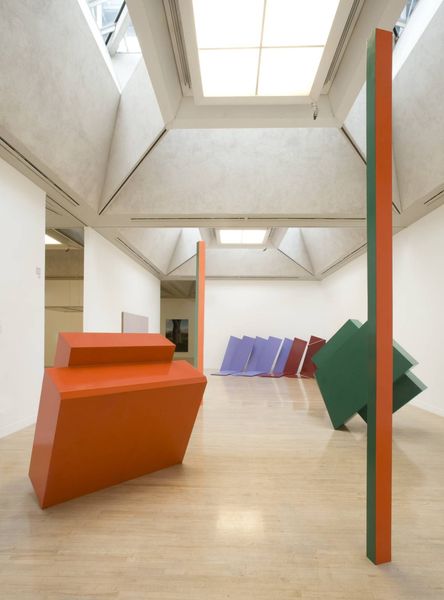
Copyright: Claude Rutault,Fair Use
Editor: So this is "dé-finition/méthode #232: l’art de la peinture — l’atelier — vermeer" by Claude Rutault, created in 1986. It looks like a mixed-media installation... It has quite a striking, almost playful atmosphere, yet there is also a stark, staged quality. How would you interpret this work in its historical context? Curator: Well, immediately, the title gives us a clue. Rutault is engaging directly with the history of art by invoking Vermeer, particularly Vermeer's "The Art of Painting." The "dé-finition" suggests an undoing of definition, a questioning of what painting, or even art, is. Installation art really took off in the late 20th century... How do you think that influenced artists? Editor: It must have been liberating to move away from traditional canvas, to engage with space in this way... It looks almost performative. The stark colour choices also suggest some reference to Minimalism? Curator: Precisely. Think about colour field painting; that’s one of the stated movements behind it. This work asks us to consider not just the artwork itself, but the entire space, even the gallery's role. These spaces – their history and inherent biases - have massive power to shape our view and experience. And what about those monochrome panels, and the monochrome furniture; are they painting, or not? Where does art *begin*? Editor: I see what you mean! The tiles also suggest that something more than mere decoration is at stake here, there may be references to the political art. Curator: Indeed. The political dimensions of the act of creation and reception are not something to be easily passed over. Editor: This makes me reconsider my initial impression. It's less playful and much more… critical, maybe even challenging! I now see it as making the viewer complicit with what’s shown, encouraging a questioning that takes you away from your original assumptions of the work. Curator: And that questioning, that critical engagement with both the artwork and its setting, that's precisely the point. The dialogue between past and present is always more alive than some audiences give it credit for.
Comments
No comments
Be the first to comment and join the conversation on the ultimate creative platform.
